Since we established PEMANDU Associates, our client engagements have taken me across over 20 countries. And while the socio-economic or business contexts can differ greatly from country to country, what I’ve noticed to be a constant are the questions I’m frequently asked about on what PEMANDU Associates does. In light of this, I thought it would be good to share my quick-fire responses to 10 of the most frequently asked questions from both governments and businesses worldwide.
Question 1: What is the value proposition of PEMANDU Associates to your clients?
Our value proposition is simple – we help our clients transform in order to achieve Big Fast Results.
I think transformation is only a worthwhile venture if it delivers results. Any leader who pursues large scale change has to justify this often painful process of change by delivering quick and significant results. Our emphasis on the speed of delivery is key to ensuring that those involved do not lose interest through a lack of progress toward the big goal.
Question 2: What do you think are the critical success factors for successful transformation to achieve big fast results?
For any transformation to be successful, I believe that two critical success factors must come into play. Firstly, transformational leadership – requiring a paradigm shift in leaders where all decisions and actions are anchored towards effecting transformational change. Secondly, a new way of working (which includes a new way of communicating). There is no way that an organisation can transform unless it puts in place a radically new way of doing things. These two things are the prerequisites, without which transformation will not deliver big fast results.
Question 3: How does PEMANDU Associates help clients navigate their transformation journey so that the two critical success factors exist in their organisation?
At the firm, we have developed our own proprietary methodology to help organisations take their transformation journey forward. These are our 6 Secrets of Transformational Leadership© and our Big Fast Results (BFR) Methodology – 8 Steps of Transformation©. The former creates that behavioural shift to lead transformation, while the latter provides the practical framework to operationalise transformation at an extremely granular level.
Question 4: How important is the delivery of results as a measure of success for transformation?
It is critical. I believe that if the transformation work does not deliver tangible results, it is a failure. In fact, I will push this point even further; if it does not deliver tangible results in the first year of implementation, I consider it a failure. For this reason, at PEMANDU Associates, we are fixated on big fast results.
Question 5: Can you give an example of a company where your approach has been successfully implemented to achieve big fast results?
When I was appointed as CEO of Malaysia Airlines (MAS) in December 2005, the company was on the brink of bankruptcy and had just recorded the biggest financial loss in its corporate history. By applying the methodologies that I just described, in my first year, we successfully turned the airline around and recorded the company’s highest ever profit of RM840 million in the second year.
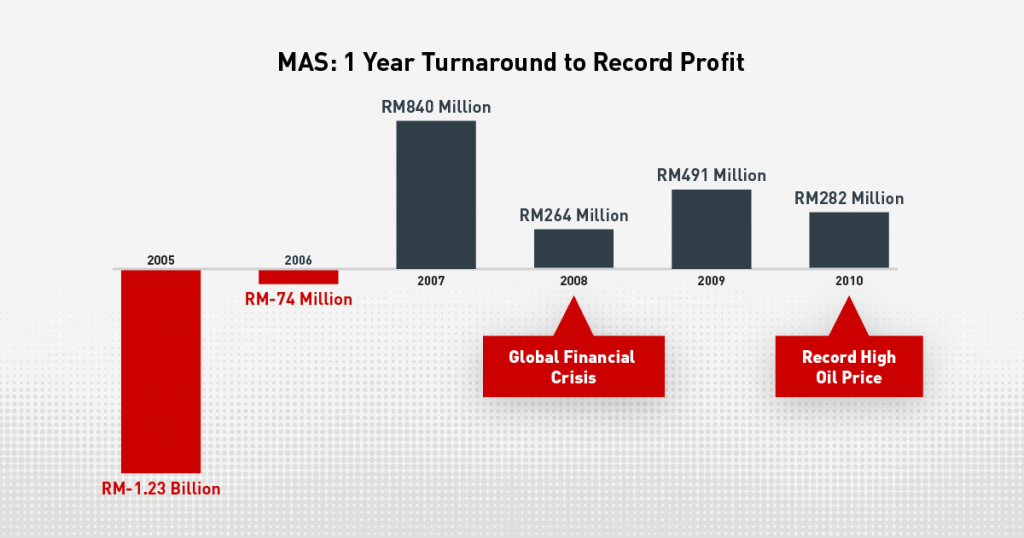
Question 6: Do you have another example in a different industry?
When I was appointed Managing Director of Shell Middle Distillates Synthesis (SMDS) Malaysia in 2003, the company had been unprofitable for 10 years. Shell MDS was the first Gas to Liquids (GTL) company in the World.
I recall on my Townhall session with staff, observing a huge sense of desperation and hopelessness. Absolutely convinced that it couldn’t be done, someone actually challenged me with a small wager that if the company became profitable within the timeframe I was given, he would pay me RM100 (a very modest bet for someone so sure of the outcome). But applying the methodology, we successfully turned the company around in just 6 months. I held the gentlemen to his word and to this day, the RM100 note can be found, framed in the Bintulu office with a note from him! We registered record profits year-on-year for 3 consecutive years.
By the way, there are many other case studies where PEMANDU Associates have helped clients succeed in their transformation programme to achieve big fast results. For example, we helped two universities successfully improve their profitability and their global ranking in the first 2 years of implementation. Another example is an unprofitable railway company that was successfully turned around in just the first year of implementation.
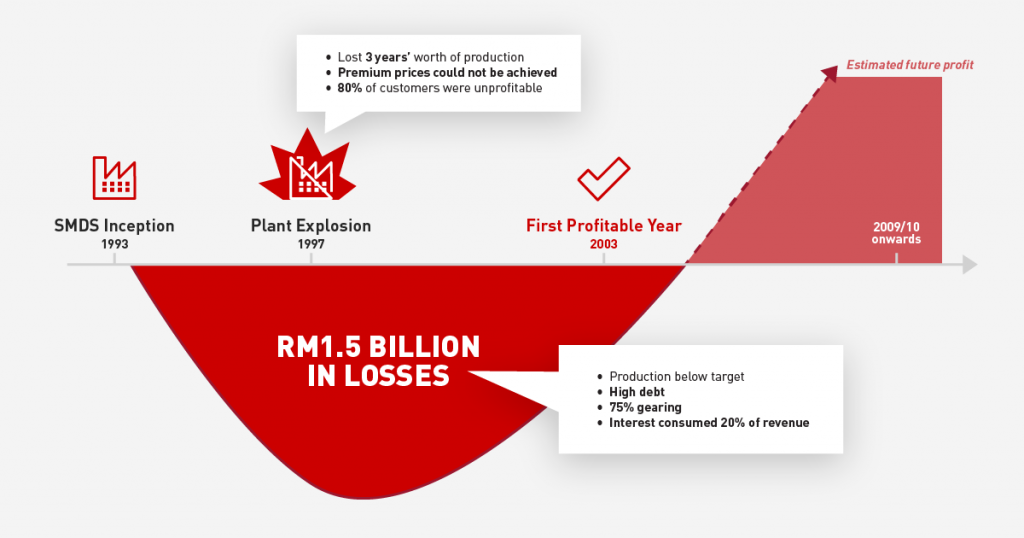
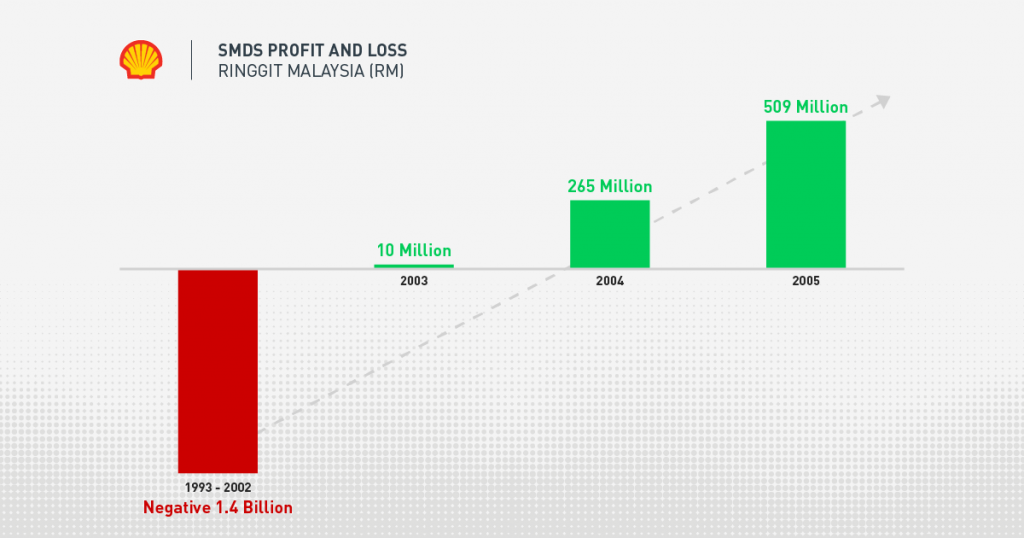
Question 7: Many of the examples you quoted are businesses. How about Governments in countries around the World, where the methodologies have been successfully implemented?
At PEMANDU Associates, we have been engaged to help many Governments around the World to help them increase investments in their economy. Our lab methodology, which involves a collaborative and meticulous approach to mapping out socio-economic transformational plans have helped many countries secure massive private investments in their first year of implementation.
For example, from the 8-week labs in Malaysia conducted in 2010, there were 131 projects with $406 billion of private investments, creating 3.3 million jobs.
In Oman, the 6-week labs generated 121 projects worth $42 billion investments.
In Nigeria, the 6 weeks labs generated 133 projects worth $51 billion investments, creating 692,000 jobs.
Question 8: Can you give social, non-economic examples in Malaysia where your methodology has been successfully implemented?
Using the methodology, under its Government Transformation Programme during the period of 2010-2017, Malaysia was able to reduce its crime index by 53%. Prior to this, the crime index increased by 43% over 4 years. In addition, the methodology was able to improve literacy and numeracy rates amongst primary schools (year 3) from 60% to 98%. Furthermore, urban public transport ridership modal share increased from 12% to 25%, while rural infrastructure (water, electricity and roads) benefited 6.6 million rural people with cash payments given to people whose incomes were in the bottom 30%.
Question 9: What are the pitfalls that might derail the transformation work from being successful?
The biggest pitfall is leadership commitment. This must be an enduring commitment, even in the face of resistance to change.
The second pitfall is the failure to institute a new way of working. There is a lot resistance from people who are not prepared to let go of the old ways of doing things. It requires relentless discipline and intervention to institutionalise the new way of working so that it becomes second nature.
Question 10: The case studies you refer to are impressive. How do you ensure that the methodology and lessons are shared more broadly so that other countries can learn and apply these transformation techniques?
The World Bank has written a case study on the PEMANDU approach in Malaysia. This case study document is one of the top hits within the World Bank’s report, which raked in the highest downloads. In addition, Princeton and Harvard have also separately written case studies of our methodology.
Apart from that, together with an excellent team of experts, I have been lecturing at the Harvard Ministerial Leadership Programme for the last 4 years. Held twice a year (April and June) in Boston, ministers from around the World attend this intensive leadership programme. I use this opportunity to share our methodology and encourage ministers to undertake their own transformation journey in their respective countries and contexts.
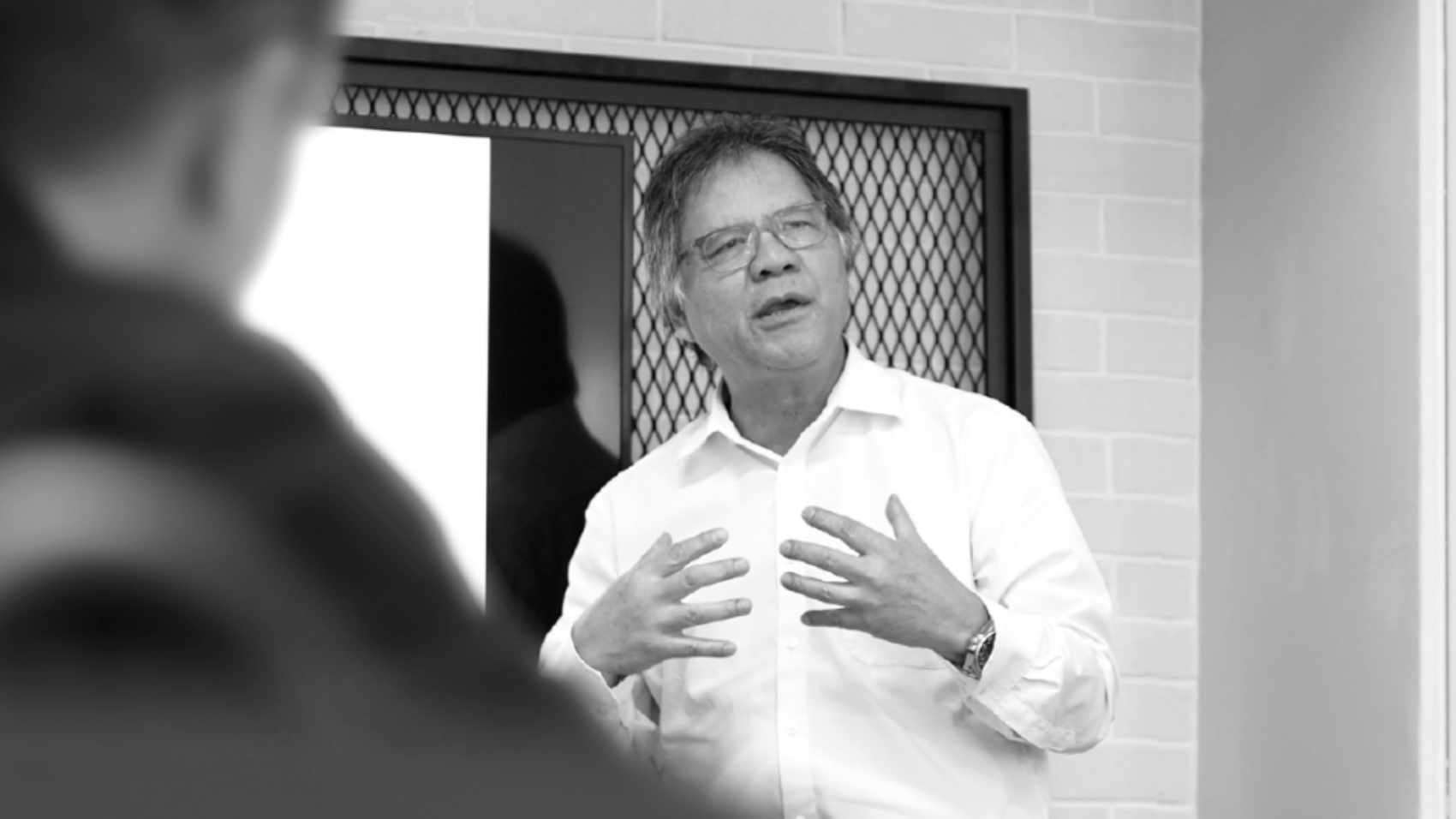
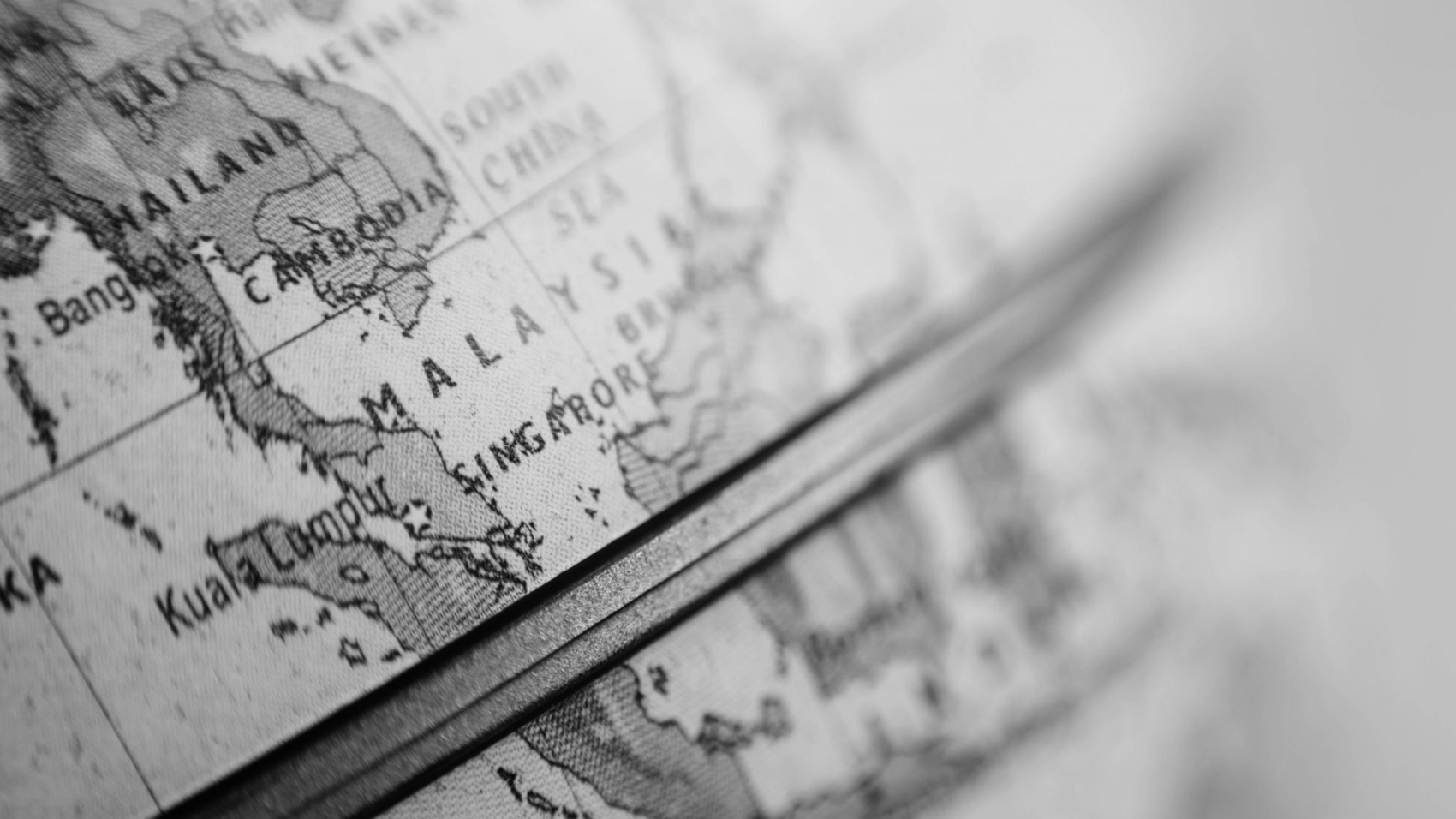

 Moving into 2020, the landscape of tourism is changing. Even the word ‘tourist’ is becoming outmoded, with many preferring the term ‘traveller’ when thinking about going abroad for vacation as the term ‘tourist’ has become attached to a few too many negative stereotypes.
Moving into 2020, the landscape of tourism is changing. Even the word ‘tourist’ is becoming outmoded, with many preferring the term ‘traveller’ when thinking about going abroad for vacation as the term ‘tourist’ has become attached to a few too many negative stereotypes.



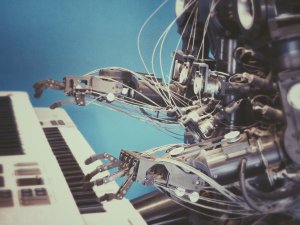 Fears aside, embracing new technological developments is the biggest commitment that policymakers and businesses need to make right now. And this commitment needs to be done in the belief that tech is – and will continue to be – a generally positive force for society.
Fears aside, embracing new technological developments is the biggest commitment that policymakers and businesses need to make right now. And this commitment needs to be done in the belief that tech is – and will continue to be – a generally positive force for society. To get ready for tomorrow’s technological innovations, organisations around the world have challenged themselves to understand the data and automation technologies that are being developed today.
To get ready for tomorrow’s technological innovations, organisations around the world have challenged themselves to understand the data and automation technologies that are being developed today.
 MeterOn was a good start but did not allow for commuters to view information about public transport services in real-time. Malaysians have often remarked that public transport in Malaysia, especially the bus service, tends to be inconvenient and tardy. Service information, such as the estimated time of arrival (ETA) of buses, is not publicly displayed so commuters often have no way of knowing how long they would need to wait for a bus or train to arrive without having to go to the platform itself or post a question on social media. This makes planning a trip on public transport (much less one that uses more than one method of public transport) inconvenient.
MeterOn was a good start but did not allow for commuters to view information about public transport services in real-time. Malaysians have often remarked that public transport in Malaysia, especially the bus service, tends to be inconvenient and tardy. Service information, such as the estimated time of arrival (ETA) of buses, is not publicly displayed so commuters often have no way of knowing how long they would need to wait for a bus or train to arrive without having to go to the platform itself or post a question on social media. This makes planning a trip on public transport (much less one that uses more than one method of public transport) inconvenient. MaaS cuts across different modes of transportation, which are owned and operated by multiple providers, to provide an easy, one-stop-shop to get from point A to point B. It has clear benefits for the public who would be able to choose where they want to go, when they want to go and how to get there. The challenge here will be getting buy-in from transport providers. For trips that include more than one mode of transport, each mode should be adequately compensated for its portion of the trip – this means taking into consideration the different ticketing systems (including fare zones, discounted fares and concessions) of the buses, trains, and e-hailing rides operating within the area.
MaaS cuts across different modes of transportation, which are owned and operated by multiple providers, to provide an easy, one-stop-shop to get from point A to point B. It has clear benefits for the public who would be able to choose where they want to go, when they want to go and how to get there. The challenge here will be getting buy-in from transport providers. For trips that include more than one mode of transport, each mode should be adequately compensated for its portion of the trip – this means taking into consideration the different ticketing systems (including fare zones, discounted fares and concessions) of the buses, trains, and e-hailing rides operating within the area.



 Claudio Seebach, from the President’s Delivery Unit in Chile, remarked that “on one side, stretch targets help persuade people to work hard to get things done. But on the other side, you can aim too high and miss, or if communicated badly, people take what you achieve for granted so it is a fine line to tread. This means that you also need clear accountabilities – so everyone knows who is doing what.”
Claudio Seebach, from the President’s Delivery Unit in Chile, remarked that “on one side, stretch targets help persuade people to work hard to get things done. But on the other side, you can aim too high and miss, or if communicated badly, people take what you achieve for granted so it is a fine line to tread. This means that you also need clear accountabilities – so everyone knows who is doing what.”
 Acting more like policy SWAT teams deployed to expedite results, delivery units aren’t meant to change a whole country overnight. Their value lies in getting specific policies implemented and changing the culture of a government towards one that is results-driven, accountable and transparent. They can be used to break stakeholders out of their silos and bring them together to work on one common goal. Used correctly, the delivery unit can be a government’s best tool to bridge the implementation gap.
Acting more like policy SWAT teams deployed to expedite results, delivery units aren’t meant to change a whole country overnight. Their value lies in getting specific policies implemented and changing the culture of a government towards one that is results-driven, accountable and transparent. They can be used to break stakeholders out of their silos and bring them together to work on one common goal. Used correctly, the delivery unit can be a government’s best tool to bridge the implementation gap.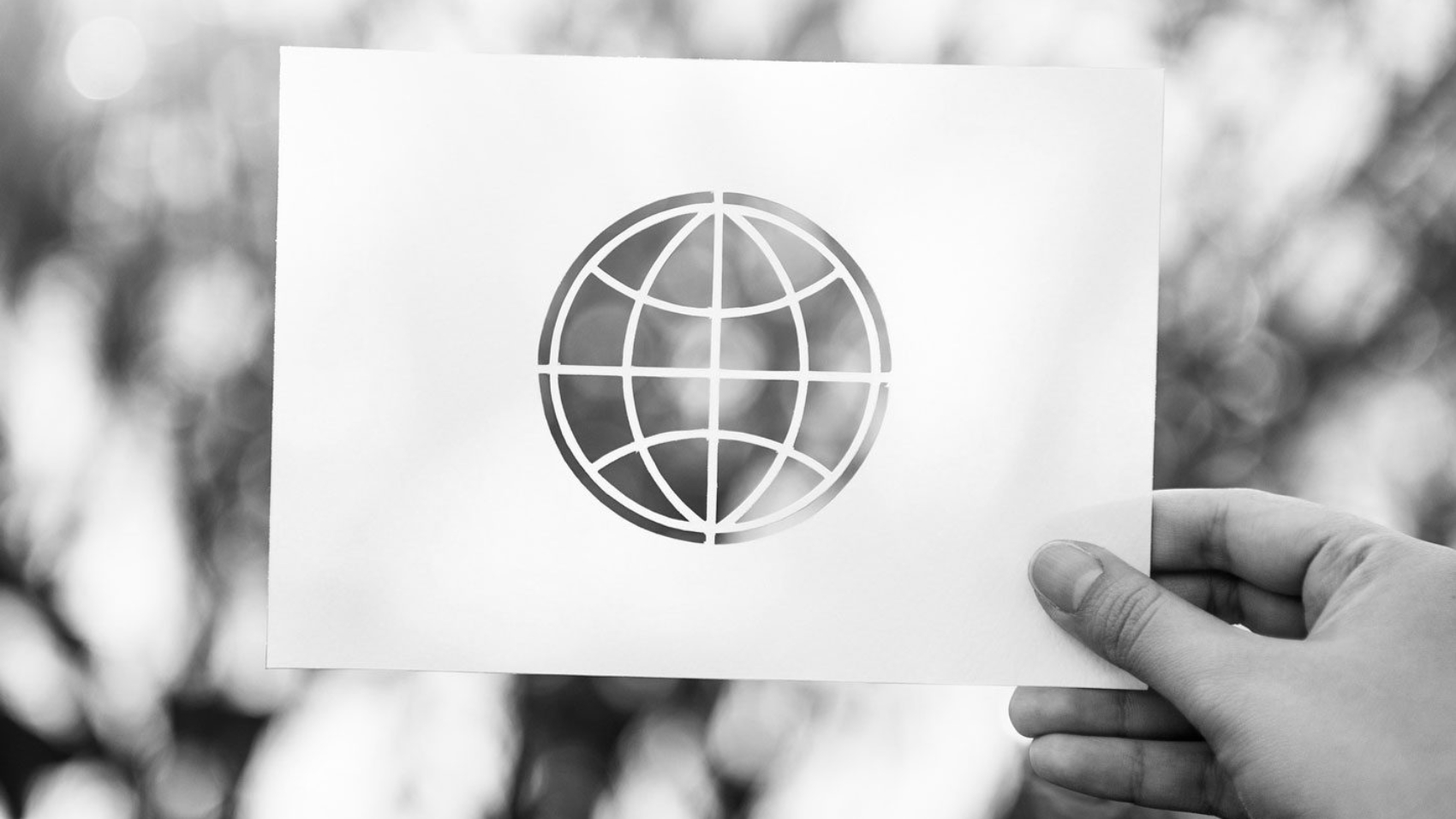
 The reality we face is that addressing climate change isn’t going to be free or easy; it will take making some very tough choices every day for things to change. As the debate over the Green New Deal rages in the US, other countries are beginning to push their versions of a new green agenda.
The reality we face is that addressing climate change isn’t going to be free or easy; it will take making some very tough choices every day for things to change. As the debate over the Green New Deal rages in the US, other countries are beginning to push their versions of a new green agenda.  In October 2018, the United Nations (UN) Intergovernmental Panel on Climate Change released a
In October 2018, the United Nations (UN) Intergovernmental Panel on Climate Change released a 

 It’s been about a year and a half since the lab took place. To say that this lab has irrevocably changed the future of Malaysia’s forests would be a bit of a stretch – much still needs to be done and new policies would need to be drawn up and enforced.
It’s been about a year and a half since the lab took place. To say that this lab has irrevocably changed the future of Malaysia’s forests would be a bit of a stretch – much still needs to be done and new policies would need to be drawn up and enforced.
 Most often, we have teachers, universities and employers pointing fingers at each other trying to blame the other for producing sub-par graduates. While employers often blame the educational system as a whole for not adequately preparing graduates for the workforce, some of that blame comes down on the students themselves for being unwilling or unable to perform suitably.
Most often, we have teachers, universities and employers pointing fingers at each other trying to blame the other for producing sub-par graduates. While employers often blame the educational system as a whole for not adequately preparing graduates for the workforce, some of that blame comes down on the students themselves for being unwilling or unable to perform suitably. Youth today are fully conscious of the difficulty of finding a job after graduation. Many are disillusioned with the fact that despite getting top-quality education from a good university, the chances of getting a job remain a challenge, let alone a well-paying one. Even a foreign degree, once coveted and sought after by Malaysians, is no longer a guaranteed path to a well-paying job.
Youth today are fully conscious of the difficulty of finding a job after graduation. Many are disillusioned with the fact that despite getting top-quality education from a good university, the chances of getting a job remain a challenge, let alone a well-paying one. Even a foreign degree, once coveted and sought after by Malaysians, is no longer a guaranteed path to a well-paying job.
 However, one thing to note from all this is that our youth are resilient. We are seeing a higher rate of entrepreneurship and volunteerism amongst young people in Malaysia who see these activities as a viable alternative to the traditional nine-to-five job.
However, one thing to note from all this is that our youth are resilient. We are seeing a higher rate of entrepreneurship and volunteerism amongst young people in Malaysia who see these activities as a viable alternative to the traditional nine-to-five job.
 In 2018, PEMANDU Associates was tasked by an oil and gas company in New Zealand to facilitate a strategic workshop to identify a feasible turnaround strategy for the company in the shortest possible time. This was underpinned by a true north of steering the company away from oil and gas dependency.
In 2018, PEMANDU Associates was tasked by an oil and gas company in New Zealand to facilitate a strategic workshop to identify a feasible turnaround strategy for the company in the shortest possible time. This was underpinned by a true north of steering the company away from oil and gas dependency. PEMANDU Associates believes that the only way for oil and gas companies to diversify is to expand into new markets or look for fresh opportunities in new industries. As the client already had experience in construction, most of the high priority suggestions were aimed at strengthening its foothold in the construction industry while scaling back its oil and gas operations.
PEMANDU Associates believes that the only way for oil and gas companies to diversify is to expand into new markets or look for fresh opportunities in new industries. As the client already had experience in construction, most of the high priority suggestions were aimed at strengthening its foothold in the construction industry while scaling back its oil and gas operations. While it is still early days yet, suggestions from the workshop were well received by the client who is now in the process of implementing the initiatives in phases in the next 5 years. Part of the PEMANDU Associates process is to aim for the seemingly impossible while making significant and regular progress along the way.
While it is still early days yet, suggestions from the workshop were well received by the client who is now in the process of implementing the initiatives in phases in the next 5 years. Part of the PEMANDU Associates process is to aim for the seemingly impossible while making significant and regular progress along the way.